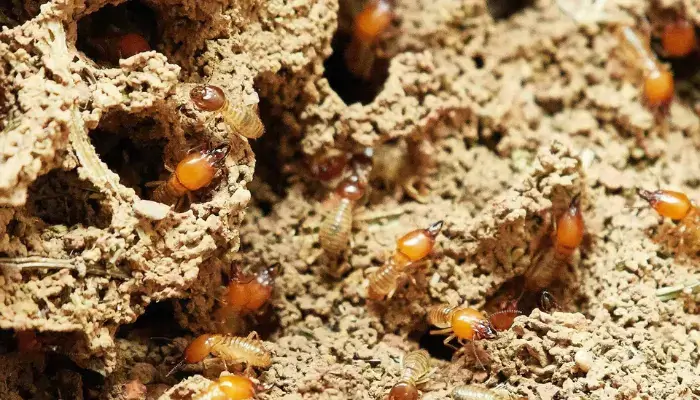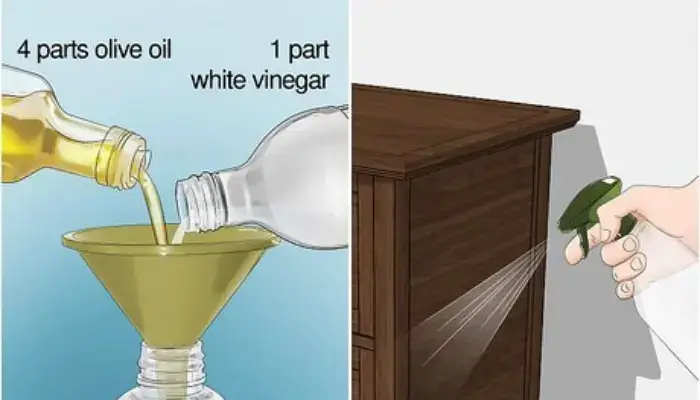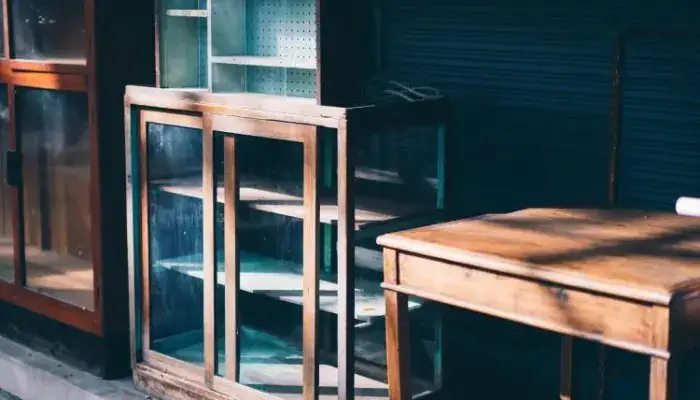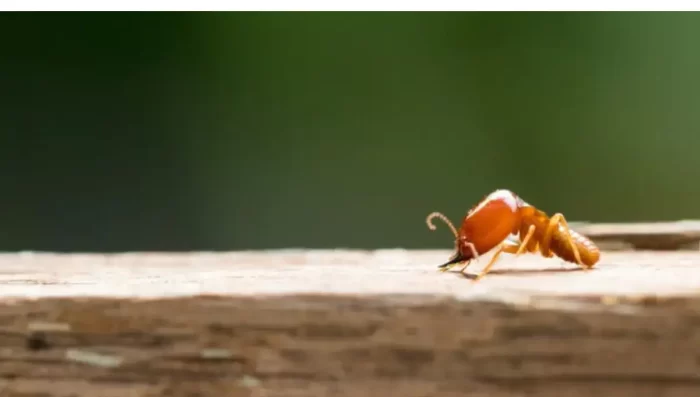There aren’t many pests that are more destructive than termites for home dwellers than insects and mosquitoes.
A house’s foundation and complete structure can be destroyed by termites in a few years. Locate each termite colony in your home, then employ techniques like cardboard traps, beneficial nematodes, heat, and cold to get rid of the pests.
Remember that professional assistance may be required to solve the issue if it persists even slightly longer. The largest investment you have ever made is your home, therefore if termites have infested it, you need to get rid of them right away.
For homes, termite infestations can be a genuine problem because some of them result in considerable, long-lasting damage. These bugs will establish a colony within a house, consuming and destroying the wood.
Termites can seriously and frequently permanently destroy a home’s structural integrity if they are not dealt with quickly and effectively.
Although homeowners can employ do-it-yourself techniques to manage minor infestations and stop new ones, in most circumstances hiring an exterminator is the best option.
When termites attack, prompt and effective treatment is essential. To identify potential problems before the damage is done, it’s important to understand the symptoms of a termite infestation. Our termite removal guide explains how to spot these pests, deal with an infestation, and use the finest do-it-yourself (DIY) techniques.
We will provide you with specific instructions on how to get rid of termites. Types of Termites, Identify An Infestation, Preventing Termites,FAQs in this article.
- How to Identify a Termite Infestation?
- List of 09 Best Ways to Clean or get rid of termites
- 1. Termite Control Using Boric Acid
- 2. Termite Control Using Cayenne Pepper
- 3. Termite Control Using White Vinegar
- 4. Treatment for wood termites is aided by sunlight exposure
- 5. Create a Cardboard Termite Trap for Home Anti-Termite Treatment
- 7. Use beneficial nematodes
- 8. Termite treatment with Neem oil
- 9. Termite treatment with Orange Oil
- How to Protect Furniture from Termites
- Find out where the termites are
- What Are The Different Types of Termites?
- How to Prevent Termites?
- FAQs About how to get rid of termites
- Tell Us In The Comments Your Opinion on how to get rid of termites
How to Identify a Termite Infestation?
Let’s go over how to spot a termite infestation before we go into termite control methods. Sadly, it’s not as simple as spotting a termite scurrying across your wood grain. Start by inspecting your attic, every joint and crack, and fuse boxes.
1. void in wood
It is quite obvious that you have termites if you tap or knock on your wood and hear a gentle thud or hollow sound. A screwdriver can be used to test your wood even more. It’s not a good sign if you press the screwdriver into your wood and it yields quickly.
2. a mud tube
For the purpose of getting from the wood they consume to the earth, subterranean termites build their own “highways” out of mud tubes.
These wooden and soil-based mud tubes are roughly the width of a pencil. Termites are there when you see them, but it doesn’t mean you’re free from them.
They might already be there because dry wood termites don’t produce mud tubes and subterranean termites don’t usually produce them.
3. Termites in real-time
You could perhaps come across some live termites. To know what you’re dealing with, it’s critical to separate them from flying ants.
Termites have thick, even abdomens, straight antennae, and even-sized back wings. Flying ants, on the other hand, have wings that vary in size, are narrower in the middle, and have bent antennae.
List of 09 Best Ways to Clean or get rid of termites
1. Termite Control Using Boric Acid

Boric acid is a wonderful place to start if you’re seeking for suggestions on how to get rid of termites organically.
Although termites are not truly killed on contact with boric acid, it does operate as a natural insecticide and wood preserver. Regardless of how much food they consume, termites are unable to get nutrients from their food when they taste and digest boric acid from themselves.
This kind of acid often comes in powder form, and it can either be sprayed directly out of the container or diluted with water. When using, it’s a good idea to put on a mask and goggles and to be especially cautious around kids.
This kind of acid is best used outside, but if you must use it indoors, simply combine one teaspoon with one cup of warm water to create a spray bottle.
Simply give the bottle a good shake to dissolve the ingredients, then use it as needed. Use this technique for about a week, and then scan the region for indications that it has had an impact on the treated areas.
2. Termite Control Using Cayenne Pepper

Although cayenne pepper gives your family’s chili a pleasant kick, it can also be a termite’s worst nightmare.
Cayenne pepper’s primary ingredient, capsaicin, is what gives it its intense heat and spiciness. By seriously harming termites’ nerve systems, this chemical also kills them naturally. To get rid of termites, use cayenne pepper as an excellent organic pest control.
If you have termite problems in a small location, consider lightly sprinkling the pepper there and repeating the process several times until all of the termites are gone.
Another method is to combine pepper and vegetable oil to make a kind of paste, which you can then apply to any affected areas for a few days. Use this approach for about 4-5 days, and then assess the effectiveness of the mixture.
3. Termite Control Using White Vinegar

Simply blend two lemons’ worth of juice with a half-cup of vinegar. This combination should be put into a spray bottle. This will be the simplest way to disperse it throughout the afflicted areas. Spray this mixture over the real mounds you see or into the mud holes that serve as entrances.
Any wooden structures, fences, or any crevices or corners that these pests can enter are additional areas to apply this mixture on. If prepared properly, this mixture will kill the termites by penetrating deeply into the cracks and crevices.
Spraying this combination again after a few days will determine whether it was effective or not.
4. Treatment for wood termites is aided by sunlight exposure

Put it in the sun if the termites are located somewhere other than your home, such as a piece of furniture or something that can be taken out of the house.
Termites like the shadows, and the sun’s warmth and light will eradicate them. Keep your furniture outside for a minimum of two to three days on a sunny day.
This technique for trapping and eliminating termites is just as effective as the cardboard technique.
Exposing termites to sunlight is one of the greatest natural ways to get rid of them. Termites dislike sunshine because they prefer moist, dark environments to grow in. As a termite management measure, expose wooden furniture to the sun nonstop for two to three days.
Termites succumb to heat stress and perish quickly. Additionally, by removing the moisture from the furniture, termites can be permanently eradicated. Additionally, it works well as a chemical-free anti-termite treatment at home.
5. Create a Cardboard Termite Trap for Home Anti-Termite Treatment

Take a few thin strips of cardboard, get them wet, and stack them one on top of the other where termites can live. Because termites eat cellulose (cardboard), this can be a great spot trap. When the cardboard is infested with termites, move it outside to a safe place and burn it. If necessary, repeat this several times.
Note: This spot trap may not solve all your termite problems. It will remove a few termites at a time, like 100 or so. If you want a stronger effect, then use other methods along with this method.
7. Use beneficial nematodes

The kind of worm known as a beneficial nematode consumes all the insects, termites, and other pests found in gardens. These nematodes hunt for hosts, like termite eggs, enter them, and then within 48 hours, they destroy them. Then they lay eggs on the host’s remains as well.
These helpful nematodes are available online or at any nearby garden supply store. These come in five different kinds at the moment.
Nematodes should be utilized as soon as they are obtained for soil temperatures above 60 °F (16 °C). Put them in the refrigerator if you won’t be using them right away. Use these either before sunrise or after nightfall because UV light ruins them.
8. Termite treatment with Neem oil

The seeds and fruits of an evergreen tree native to the Indian subcontinent are used to make neem oil. For hundreds of years, neem oil has been a highly effective method of pest management.
The reproductive cycle of insects is disrupted by this oil. A termite’s hormonal system is altered once it consumes oil. As a result, the termite stops eating and stops reproducing. Because the elder termites die, this ultimately prevents the laying of eggs, which stops the termites from expanding.
The regions that have been treated are protected by this unique substance’s unpleasant odor, which repels termites.
To create your own blend, first buy raw or crude vegetable oil. Once you have it, you must use a mild liquid soap to emulsify the oil. Combine 1 litre of water, 2 ml of liquid soap, and 5 ml of neem oil. Make sure to first add the soap before incorporating the neem oil. Once finished, simply pour the mixture into a spray bottle and use as required.
Use this mixture as soon as possible after making it because the contents start to degrade after around 8 hours.
9. Termite treatment with Orange Oil

If you still have questions about “How to Get Rid of Termites,” read on. Your remedy might be orange oil. Due to its low toxicity, this form of termite killer, which is derived from orange rinds, is a fantastic choice. This alternative is the best for the job of destroying termites because it has a D-limousine that doesn’t damage people or animals.
In the early phases of an infestation, rather than once they have taken over completely, orange oil causes termites the most harm.
This technique only functions locally, which means it only acts in the locations where the oil has been applied. You might need to drill holes and pour the oil into the mud tubes or contaminated areas. For this to have an impact, you might need to repeat this process multiple times and in different locations.
How to Protect Furniture from Termites
- Avoid moisture: Examine your roof, gutters, and air conditioners for any signs of moisture. Due to their attraction to moisture, subterranean termites can be avoided by keeping your property dry and free of leaks.
- Keep pipes and gutters clean: Pipes and gutters that aren’t maintained regularly might collect wood debris and produce wet environments that are ideal termite nesting grounds.
- Clear wood away from the house: Termite infestations may begin near your home’s deck, porch, crawl space, or stacks of firewood or tree stumps. Build outdoor wooden constructions with termite-resistant wood, if at all possible.
- Choose the right yard materials: Good options include rubber, gravel, and mulch created without wood. Avoid using wood chips and mulch that contain wood as much as you can because termites can easily access these materials as meals.
- Schedule termite inspections: Request a termite examination if you see any indications of termite activity. Before determining what type of treatment is required, several businesses will conduct them for no charge.
Find out where the termites are
1. Look for signs of termite sites
Termites won’t be visible to the naked eye, but that doesn’t mean you shouldn’t be concerned about them. Termites can be identified by the major symptoms of cracked ground, holes in woodwork, and hollow foundations. The termites may be visible to you.
- Go to the basement with a screwdriver and flashlight to check the foundation beams and gaps for hollowness. You can test the strength of the wood by tapping it and driving the screwdriver into the wood. Termites may be present in your home if the wood immediately begins to come off.
- Watch out for any termite waste during this investigation as well. Termite faces frequently have a dark brown or wooden appearance. They are a sign of termite activity when found near weakening timber.
- A subterranean termite infestation may produce dirt tunnels and tubes, whereas a dry wood termite infestation builds nests inside the wood. You may even discover a termite dwelling inside your home.
2. Find out what type of termites you have
Subterranean termites and dry wood termites both exist in your home. In contrast to the second, which is only found in wood, the first is found in the soil and wood of the house close to yours. Coastal and hot regions are home to dry wood termites. Anywhere throughout the state, you can discover subterranean termites.
- In addition to piles of wood and compost, subterranean termites can be located close to the home’s foundation.
- Subterranean termites are more destructive than dry wood termites and may need a different approach to treatment.
What Are The Different Types of Termites?
Subterranean termites and dry wood termites are the two main types of termites you’ll encounter in the United States. It’s critical to recognize which type you are dealing with because various treatment approaches may be necessary. For dry wood termites, you’ll need to spot-treat or hire fumigation services, whereas you can develop poisonous barriers for subterranean termites.
1. Subterranean termites
The timber on your home’s foundation as well as the surrounding soil and any compost piles are all home to subterranean termites. To go around your house, they build mud tubes or roads out of wood and soil.
Due to their saw-toothed teeth, this termite variety typically does more damage than dry wood termites. Subterranean termites have the ability to fully destroy a structure over time.
Orkin estimates that 95% of termite damage in the United States is caused by subterranean termites. Termites that live underground are widespread in the nation.
The length and morphology of subterranean termites ranges from 1/8 to 8 inches. Their “caste” determines their hue. Soldiers have brown heads but the same body color as the workers, who are a light cream tone.
Termites that reproduce come in two different sorts and hues. Secondary reproductions are creamy white, while primary reproductions are black or brown. Termite colonies in the ground can grow significantly, from 100,000 to 1 million termites.
2. Dry wood termites
Dry wood termites can only live in wood, in contrast to subterranean termites, which must come into touch with soil to survive. They don’t build mud tubes to get around, and they typically exclusively inhabit warm coastal areas.
Dry wood termites come in a variety of colors and sizes between 18 and 12 inches. Like subterranean termites, the termites that directly harm the woodlands are white. The winged dry wood termites range in color from light brown to yellow-tan. Up to 2,500 termite colonies can live in dry wood.
How to Prevent Termites?
There are a number of ways you might make your house uninhabitable or less inviting to termites. Here are the best techniques.
1. routine inspections
Of course, frequent termite examinations by a qualified pest treatment business are the best preventative measure.
2. Take cautious when using mulch
Because they require soil and some types of mulch contain wood, subterranean termites. Choose mulch composed of rubber or gravel as an alternative.
3. Be cautious of wood
It’s important to avoid stacking firewood up against your house and leaving tree stumps in your yard since termites are drawn to the cellulose in wood. Always leave at least 6 inches between your porch, deck, or patio and the ground when building your home, and whenever possible, choose termite-resistant wood.
4. Fill in gaps and cracks
Where pipes meet the wall in your foundation, caulk and seal the joint. Also, make sure to seal off windows and doors.
5. clear pipes and gutters
Termites adore warm, dark, and wet environments for hiding. Regularly clean out gutters and pipelines to deter termites from colonizing.
6. Check for leak
Without moisture, subterranean termites cannot survive. Keep your house dry, especially the roof and the air conditioner, to deter them.
FAQs About how to get rid of termites
Can you eliminate termites on your own?
It may be able to eradicate termites by oneself in some instances of lesser infestations. The DIY techniques listed below are worth a shot:
Applying liquid or foam on the exterior of your home Organic alternatives include
using helpful nematodes or aromatic oils
installing termite baits to gradually eradicate the colony
Note that not all of these techniques are appropriate to use around animals or children, and larger infestations will probably require a professional firm. Spraying boric acid around troubled areas inside the house.
What Natural Method Is Fastest To Get Rid Of Termites?
You must eliminate the termites’ queen in order to quickly eradicate them. Stock up on diatomaceous earth fit for human consumption! This medicine is inexpensive, potent, and quick acting. Termites can be easily eliminated with Diatomaceous Earth (DE), although it does require some effort on your part. Alternatively, you might contact pest control for assistance. You can’t just scatter this stuff around and hope the termites will go away.
The entire colony is eliminated if the queen termite is eliminated. You can effectively wipe off the entire colony if you can locate the queen and sprinkle it with diatomaceous earth. The ability to get rid of termites safely and naturally is an extra benefit of employing food grade DE.
How to kill termites in wood?
Termite infestation in wood, if not dealt with quickly, causes a lot of damage to the furniture. The basic home remedies for this are – sunlight exposure, orange oil spray or an exterminator.
How to get rid of dry wood termites?
Dry wood termites can be controlled by drilling and filling holes in painted or varnished wood. To start, drill holes every 10 inches or so into the termite-infested wood. Once you reach the nest, you will encounter resistance. Then use termiticide to plug the holes. To finish, fill the holes with putty or a wood patch.
Tell Us In The Comments Your Opinion on how to get rid of termites
Additionally, don’t forget to read the other post on ideas for making house, which will definitely provide you with an insightful and helpful perspective.
